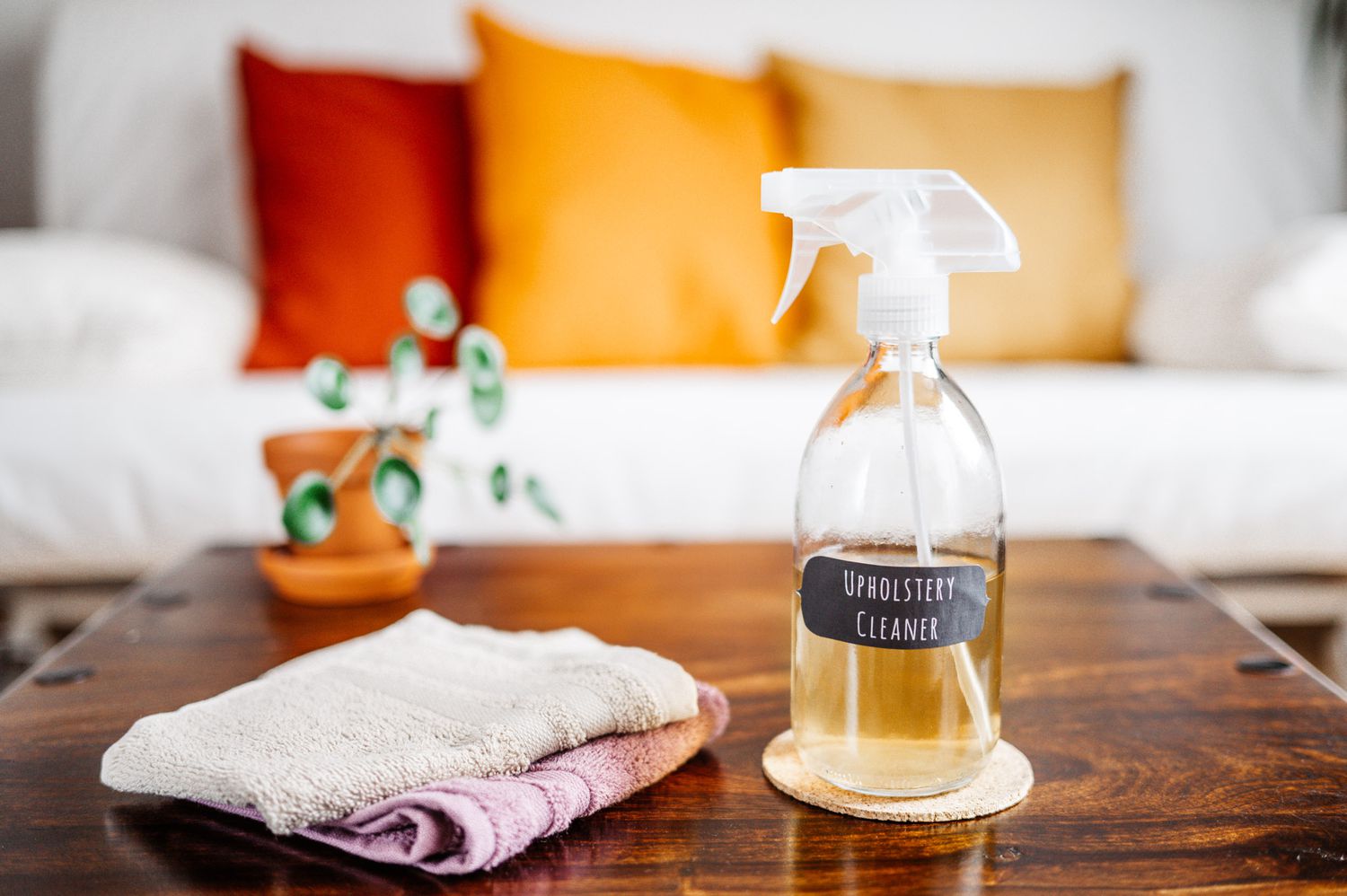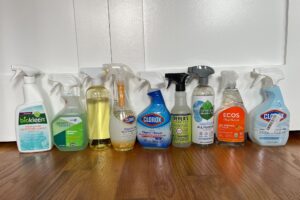In 2024, keeping your interior clean is easier than ever with advanced cleaning products and effective DIY techniques. Whether you’re dealing with everyday dirt, stubborn stains, or general wear and tear, DIY furniture cleaning can help preserve the look and life of your furniture. This comprehensive guide provides you with the basic knowledge and practical tips for cleaning your upholstery yourself using household products and specialized tools.
Know Your Upholstery Fabrics
Before you begin any cleaning process, it’s crucial to understand what type of upholstery fabric you’re dealing with. Different fabrics, such as leather, microfiber, cotton, or velvet, have specific cleaning requirements. Check the care label or manufacturer’s instructions to determine the best cleaning methods and products. For example, leather requires specialized cleaners and conditioners, while microfiber can usually be cleaned with steam or a specific upholstery cleaner. Knowing your fabric type can help you choose the right cleaning method and prevent potential damage.
Know your fabric type can help you choose the right cleaning method and prevent potential damage. Regular Maintenance: Vacuuming and Dusting
Regular maintenance is essential to keeping your upholstery in good condition. Start by vacuuming your interior weekly to remove dust, dirt, and pet hair. Use a vacuum cleaner with an upholstery attachment and reach into the cracks and crevices where dirt can accumulate. Dusting with a soft brush will also help remove surface dirt. Regular vacuuming not only keeps your upholstery looking clean, but it also prevents dirt from setting in, which can lead to premature wear.
Quick Stain Removal
Quick stain treatment is essential to prevent stains from setting. For most fabric upholstery, simple DIY cleaning solutions can be effective. Mix a small amount of mild dishwashing detergent with warm water and gently wipe the stain away with a clean cloth or sponge. Avoid scrubbing, as this can damage the fabric. For more serious stains, you can use a mixture of white vinegar and water or a special upholstery cleaner. Always test a cleaning solution on a hidden area of the fabric first to make sure it won’t discolor or damage the fabric.
Deep Cleaning Fabric Upholstery
A deep cleaning of fabric upholstery is necessary to remove deep-seated dirt and restore the appearance of the fabric. One effective method is steam cleaning. Steam cleaners use high-temperature steam to penetrate fabrics, remove dirt, and disinfect surfaces. If you don’t have a steam cleaner, you can use a DIY furniture cleaner. Mix one cup of water, one cup of white vinegar, and a few drops of dish soap into a solution. Apply the solution to the fabric with a clean cloth, blotting, then rinse with another damp cloth. Allow the upholstery to dry completely to prevent mold and mildew.
Clean Leather Upholstery
Leather upholstery requires special care to maintain its look and feel. Start by dusting the leather with a soft, dry cloth or a vacuum cleaner with a brush attachment. When cleaning, use a leather cleaner that is appropriate for your type of leather. Follow the product instructions and apply the cleaner with a soft cloth, avoiding water or harsh chemicals. Apply leather conditioner after cleaning to keep the material soft and prevent drying or cracking. Regular conditioning helps maintain the natural shine of the leather and extends its life.
Using a DIY Upholstery Cleaner
If you prefer a DIY solution over a store-bought cleaner, there are several effective options. For a general upholstery cleaner, mix one cup of water with one tablespoon of dish soap and one tablespoon of white vinegar. Apply the solution with a clean cloth, blot gently and scrub. For a natural deodorizer, mix one cup of water with a few drops of essential oil and lightly spray the upholstery. Always test DIY cleaners on a small, inconspicuous area first to make sure they don’t cause any adverse effects.
Dealing with Pet Hair and Odors
Pet owners often face the challenge of removing pet hair and odors from their interiors. Use rubber gloves or a lint roller to remove pet hair. The rubber glove method involves moistening the glove and placing it over the upholstery to lift the hair, while a roller is used to quickly pick up loose hair. For odors, you can sprinkle baking soda on the affected area, let it sit for 15-20 minutes, and then vacuum it up. You can also use a mixture using slipcovers can help prevent uneven wear and keep your upholstery in top condition.
Maintaining Your Upholstery
Cleaning Tools Proper maintenance of your cleaning tools ensures they perform effectively and last longer. For vacuum attachments, regularly clean and remove any debris that may have accumulated. Wash and rinse cleaning cloths and sponges thoroughly after each use to prevent the spread of dirt and bacteria. For steam cleaners, follow the manufacturer’s guidelines for cleaning and maintaining the equipment. Keeping your tools in good condition will make your upholstery cleaning tasks easier and more effective.
Professional Help
When to Call an Expert While DIY cleaning can handle many upholstery issues, there are times when professional help is warranted. If your upholstery has significant stains, deep-seated dirt, or requires specialized care, consider hiring a professional upholstery cleaner. Professionals have access to advanced cleaning equipment and techniques that can effectively address challenging issues without damaging your furniture. Additionally, if you have delicate or high-value upholstery, professional cleaning may be the best option to ensure it’s treated with the utmost care.
Conclusion
Mastering DIY Upholstery Cleaning in 2024 In 2024, maintaining clean and beautiful upholstery is achievable with the right DIY techniques and tools. Understanding your fabric type, performing regular maintenance, and using effective cleaning methods can keep your upholstery looking fresh and extend its lifespan. From spot cleaning and deep cleaning to handling pet hair and odors, these DIY tips provide practical solutions for common upholstery issues. By embracing these strategies, you can ensure your furniture remains a clean, inviting, and stylish part of your home for years to come.



